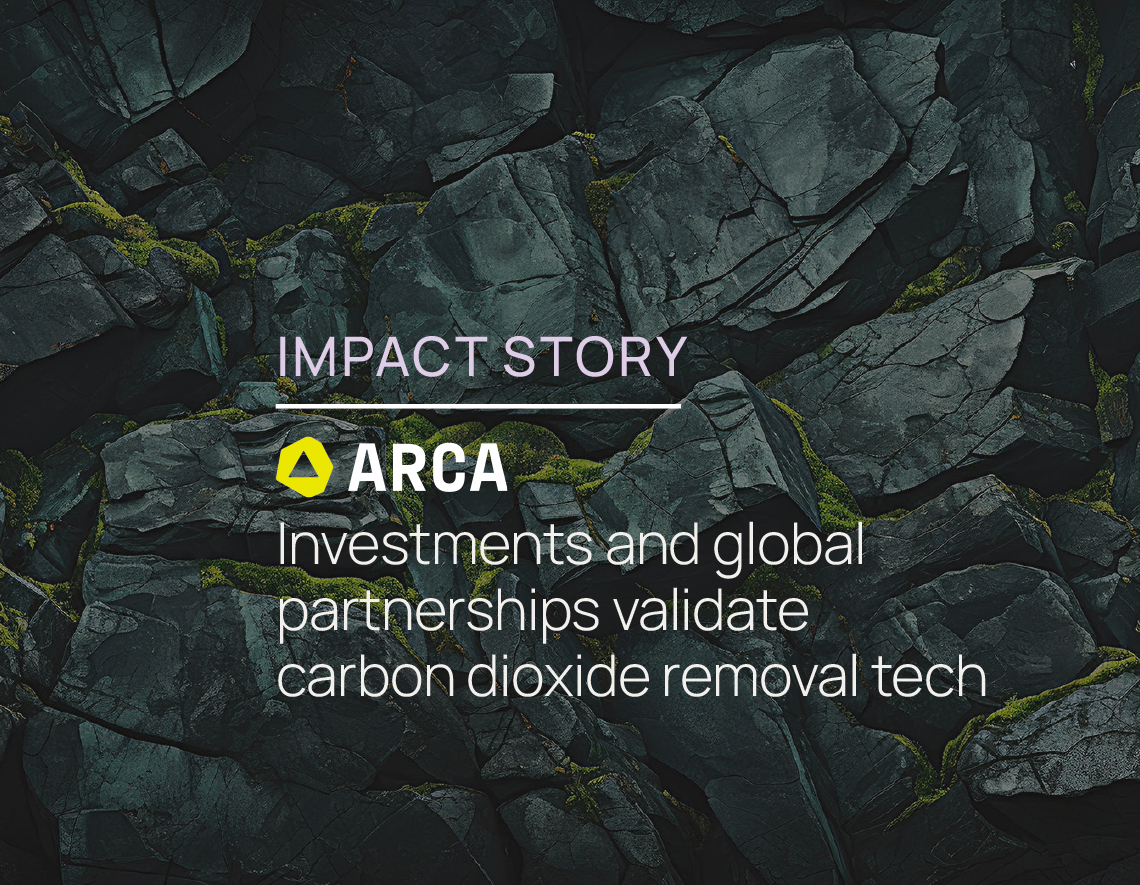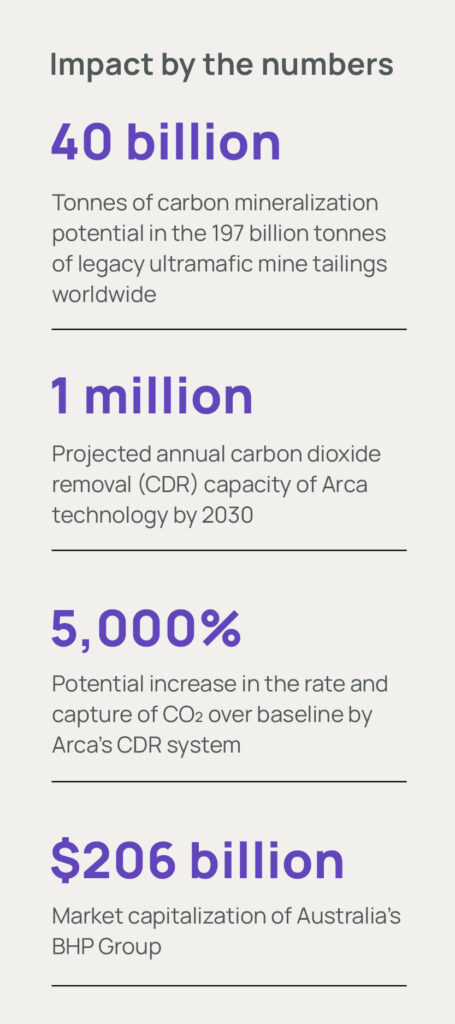
The ancient story of David and Goliath has come to represent an underdog triumphing over a much larger and stronger adversary. But instead of fighting each other, what if the two combatants had worked together to achieve a common goal?

Such is the case today with Arca and BHP Group. The former is a Vancouver-based carbon mineralization company founded in 2021 by University of British Columbia (UBC) scientists Greg Dipple, Bethany Ladd and Peter Scheuermann. Australia-based BHP, meanwhile, is one of the world’s largest mining multinationals.
Their common goal of advancing carbon dioxide removal (CDR) at mine sites got a shot in the arm in late 2023 when the B.C. Centre for Innovation and Clean Energy (CICE) provided Arca with a $1.25 million non-dilutive investment. As well as supporting Arca’s air-to-rock carbon mineralization pilot project using tailings from BHP’s Mt. Keith Nickel West Mine in Western Australia, the investment is opening doors for more collaborative partnerships that will boost global market adoption of Arca’s patent-pending climate tech.
Supercharging a natural solution
Arca’s CDR platform accelerates the carbon mineralization potential of ultramafic rock that is especially plentiful at the 19-year-old Mt. Keith site. Rich in magnesium, this igneous rock naturally captures and permanently stores CO₂ when exposed to the air — and that’s where Arca’s remote-controlled rovers are playing an innovative new role.
As they criss-cross a section of Mt. Keith’s flat tailings storage area, the table-sized rovers churn the surface of the tailings to increase the rate and amount of carbon mineralization beyond what is naturally possible. This activity occurs in response to real-time information produced by Arca’s unique combination of redundant carbon flux measurement devices and proprietary algorithms. Arca is also developing new tech to liberate magnesium from the mineral lattice structure of ultramafic rock, which will increase both the rate and capacity for CO₂ capture and permanent storage.
Sean Lowrie
Head of External Affairs – ArcaFrom paradox to proactive CDR
BHP is part of an industry that “faces a unique paradox,” Lowrie says. “On the one hand, mining companies need to produce 10 to 20 times more metals, like nickel, for green energy infrastructure. On the other hand, mining can be very carbon intensive. By helping mineral producers like BHP transform their mine waste into massive carbon sinks, Arca is opening the door to a unique opportunity for large-scale permanent CDR that could contribute meaningfully to the global goal of 10 gigatonnes a year by 2050.”
With the Mt. Keith pilot under intense scrutiny, the CICE investment has done more than de-risk the project for BHP and get it off the ground smoothly, Lowrie adds. “It is helping Arca to achieve unequivocal third-party validation that our technology works in the context of an operational mine.”

Taking validation to the next level
The 2024 goal of the Mt. Keith pilot is to remove 1,000 tonnes of CO₂, with subsequent milestones involving deployments with several other mining companies, and then forming multi-year offtake agreements with corporations buying carbon credits in advance. For this to unfold as planned, validation of Arca’s ability to scale its tech to gigatonne levels is needed, and here, again, CICE is providing key support. By allocating a non-dilutive investment to Arca’s development of measurement, monitoring, and verification (MMV) technology that quantifies CDR via carbon mineralization, CICE is “helping Arca to fast-track the development of our MMV tech so that we can deliver verified carbon removals sooner and scale our tech more quickly and effectively,” Lowrie says.
While Arca’s CDR solutions are currently focused on mine tailings, its MMV tech will be applicable to other forms of surficial carbon mineralization, which involve storing CO₂ in different alkaline industrial wastes. Together, these solutions are projected to achieve a total CDR capacity of more than a gigatonne per year by 2050.
Scaling surficial carbon mineralization to gigatonne levels is a key aspect of achieving the global 1.5 degree warming target. Indeed, according to “Catalyzing Carbon Dioxide Removal at Scale,” a new report from CICE, at least 10 gigatonnes of CDR per year is needed by 2050. Putting this amount into perspective, it is greater than the annual CO₂ emissions of all the coal (8 gigatonnes), oil (4 gigatonnes), and gas (3 gigatonnes) produced each year.
The bigger Arca’s deployments are, in other words, the easier these CDR hurdles will fall.
